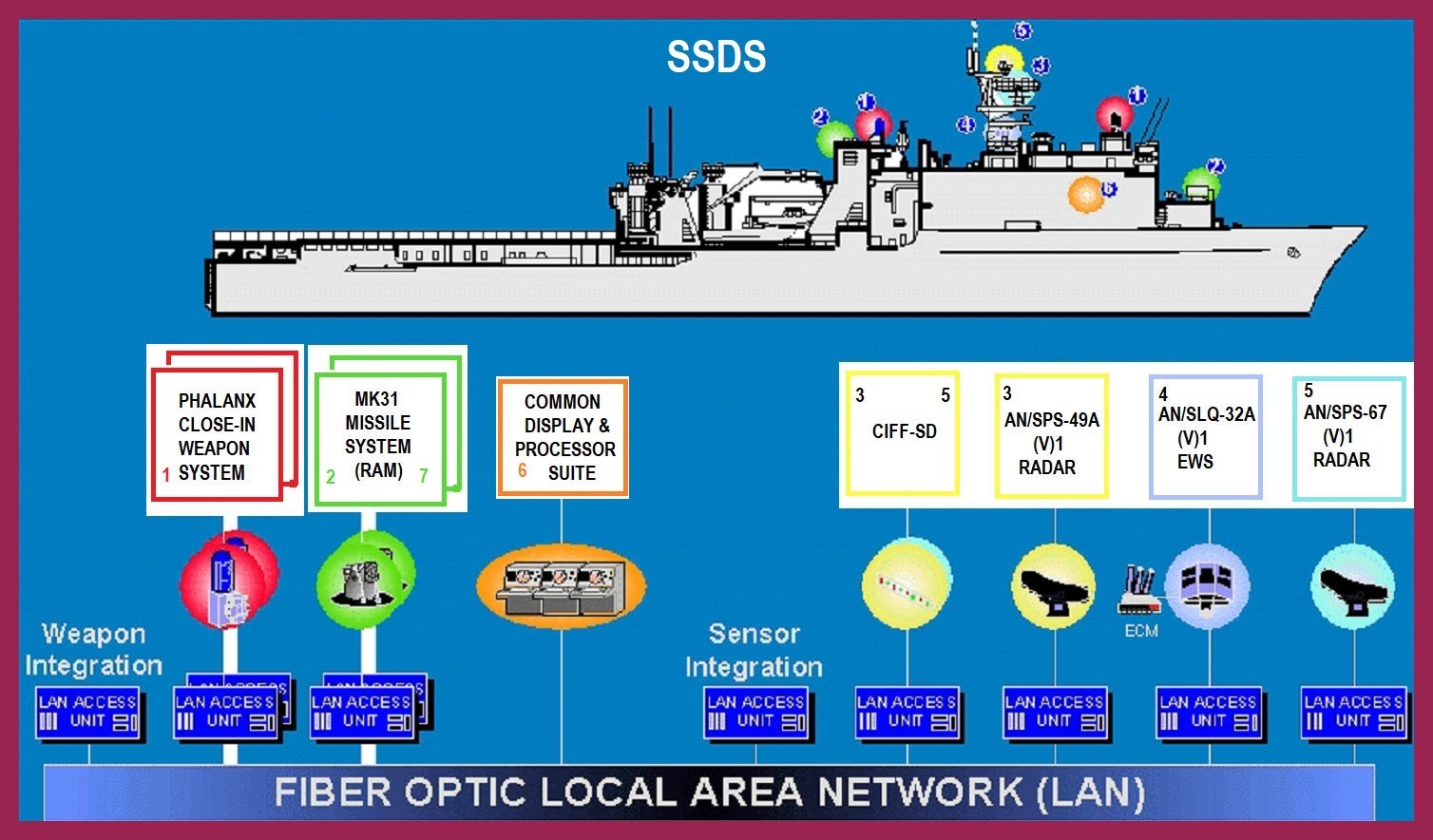The Navy's Ship Self-Defense System (SSDS)

|
The Ship Self-Defense System (SSDS) is a combat system specifically designed for anti-air
defense of aircraft carriers, and most other non-Aegis United States Navy combat ships.
The different mods of the SSDS differ primarily according to the class of ship being
protected as follows:
* Mod 1, used in CVN 68 class aircraft carriers
* Mod 2, used in LPD-17 class amphibious ships
* Mod 3, used in LHD-1 class amphibious ships
* Mod 4, for LHA-6 class amphibious ships
* Mod 5, for LSD-41 and LSD-49 amphibious ship classes
* Mod 6, for CVN 78 class aircraft carriers
SSDS is designed to link together a ship's weapons systems and sensors to provide
situational awareness, and to coordinate combat mission operations.
The system's modular design makes it scalable and expandable, and its open
architecture means it can be upgraded affordably. It also features a high degree of
automation that follows naval doctrine while maintaining the commanding officer's
absolute control.
Using modern networking technology, the system:
* control sensors
* identifies and evaluates potential threats
* provides defense in-depth through weapon system assignment and scheduling
* executes other specific tactical procedures
* controls aircraft
The sensors that are incorporated under SSDS typically include:
* AN/SPS-49 air search radar
* AN/SPS-48E & G 3D air search radar
* Dual Band Radar (SPY-3 & SPY-4) on CVN 78 class
* AN/SPQ-9B horizon search radar
* AN/SPS-67 surface search radar
* AN/SPS-73 surface search/navigation radar system
* AN/SLQ-32 electronic warfare system
* Centralized Identification Friend or Foe (CIFF)

